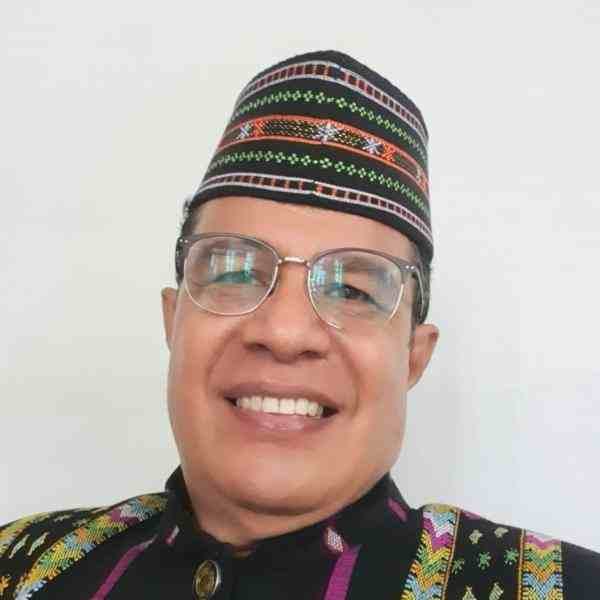Introduction
Working in one of Indonesia's dry, barren eastern lands, Fernandez is enabling the villagers to organize their own self-help preventive and primary health care system spearheaded by local clusters dominated by young women.
The New Idea
Hyronimus is pioneering an alternative approach to rural health care and development work. Many of its individual components have been tried before with varying degrees of success. However, Hyronimus is making them all work, and work together. His approach emphasizes prevention rather than cure, disseminates knowledge of basic health care techniques, and reduces the demand for emergency care while making it more accessible.Hyronimus has built 164 local community health groups, or "clusters" on the island of Lembata (total population 96,000). These clusters, in which young mothers play a particularly important role, take charge of community health and child care. His clusters also provide a forum within which members can explore related issues, and the organization and resources to see related initiatives through. Some clusters have taken advantage of this to build and maintain family latrines, while others have begun to raise pigs and ducks for use as inexpensive supplementary sources of protein that do not require much land.This decentralized, self-help approach to health care serves several important purposes. Self-help care, at least for the foreseeable future, is practically the only way health care can reach more than a token minority of rural families. Perhaps even more important in the long run, the clusters empower their members, chiefly young women, by directly giving them the ability and responsibility to take charge of their own destiny.
The Problem
The government has made primary health care a priority in its development programs. A national health care system has been introduced that includes the establishment of health centers in government seats and the assignment of trained doctors to these centers.This system was introduced as a matter of course to Lembata, but instead of solving the island's health problems, the government-established centers have in some ways made them worse: they have had little success in spreading awareness of preventive practices, and the local population has become dangerously dependent on them for "cures."Residents are caught in a double bind of chronic poor health and dependence on distant health posts. The dry, barren land leads to food shortages and problems of clean water supply: chief causes of poor health. If sick, residents must then face the difficulties of transportation on the island. Health centers are located in the seat of each district hours away from the typical village. Emergency journeys from home villages to health centers typically take hours. In addition, for those with very serious health problems, Lembata is quite isolated, lying nineteen hours by ferry from Kupang, the capital of East Nusa Tenggara, the nearest point where adequate care for such cases is available.The villagers, therefore, must know how to prevent disease and how to administer primary health care themselves. They need to know more about nutrition and hygiene as well as simple things to do when they get sick, like rehydrating people with fever.
The Strategy
Over his six years as a working doctor on Lembata, Hyronimus developed a series of practical, workable ways of solving these problems. The first step almost has to be making the community aware of its need for preventive and primary health care. He first works within the health care clusters, and then he tries to reach the community at large through cluster members.One example of his outreach techniques is his billboard competition. Hyronimus first helps the community determine which health messages are most important to their area. The messages are then written on tires and attractively illustrated. The tires are put on poles and installed along the few roads and in other public places.The second key component of his plan is health care training at the clusters. These trainees become de facto representatives of the health centers in more distant villages, able to help their fellow islanders in need. Hyronimus also helps them organize communitybased medicine centers where people can get medicine for the most common (and often debilitating) afflictions, such as malaria, diarrhea, colds, and wounds.From these health care training programs have sprung similar training programs in areas that villagers felt were central to the achievement of health for all, such as modern agricultural techniques, clean water supply, animal husbandry, and gender issues. Hyronimus hopes to use the clusters to continue to increase the number of people trained in basic health care, and to create an ever greater awareness of health issues among the rural communities. He hopes to use Lembata as a model and carry his fight to neighboring islands as well.
The Person
Hyronimus came to the island of Lembata in 1985, immediately after he obtained his degree from the medical school of Gadjah Mada University in Yogyakarta. He applied to be assigned to Lembata because he wanted to return to his native region, part of the particularly poor eastern half of Indonesia.He developed an interest in health care as a child. Hyronimus was encouraged by both his grandfather, a traditional healer, and his father, a paramedic, to find ways to help others a mission he never forgot. While a medical student, for example, Hyronimus and some of his fellow students organized a clinic to offer free health services to cab drivers and slum dwellers.Hyronimus was born in 1958. His wife, also a doctor, is a partner in this work. They have two sons.
